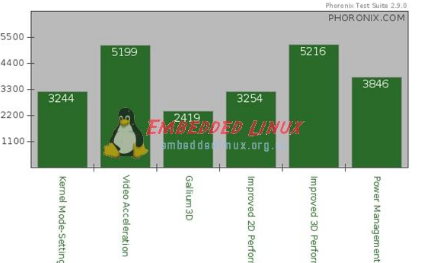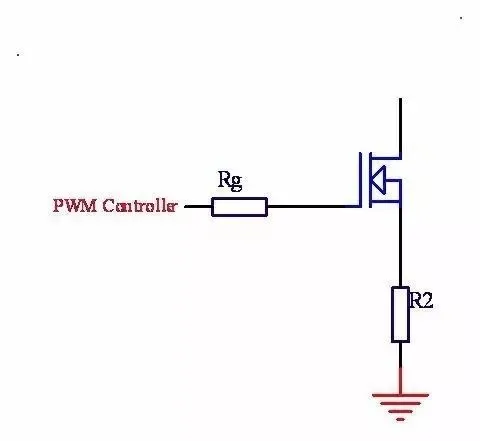根节点那一节我们说过,最简单的设备树也必须包含cpus节点和memory节点。memory节点用来描述硬件内存布局的。如果有多块内存,既可以通过多个memory节点表示,也可以通过一个memory节点的reg属性的多个元素支持。举一个例子,假如某个64位的系统有两块内存,分别是
? RAM: 起始地址 0x0, 长度 0x80000000 (2GB)
? RAM: 起始地址 0x100000000, 长度 0x100000000 (4GB)
对于64位的系统,根节点的#address-cells属性和#size-cells属性都设置成2。一个memory节点的形式如下(还记得前几节说过节点地址必须和reg属性第一个地址相同的事情吧):
?? ?memory@0 {
?? ??? ?device_type = "memory";
?? ??? ?reg = <0x000000000 0x00000000 0x00000000 0x80000000
?? ??? ??????? 0x000000001 0x00000000 0x00000001 0x00000000>;
?? ?};
两个memory节点的形式如下:
?? ?memory@0 {
?? ??? ?device_type = "memory";
?? ??? ?reg = <0x000000000 0x00000000 0x00000000 0x80000000>;
?? ?};
?? ?memory@100000000 {
?? ??? ?device_type = "memory";
?? ??? ?reg = <0x000000001 0x00000000 0x00000001 0x00000000>;
?? ?};
chosen节点也位于根节点下,该节点用来给内核传递参数(不代表实际硬件)。对于Linux内核,该节点下最有用的属性是bootargs,该属性的类型是字符串,用来向Linux内核传递cmdline。规范中还定义了stdout-path和stdin-path两个可选的、字符串类型的属性,这两个属性的目的是用来指定标准输入输出设备的,在linux中,这两个属性基本不用。
memory和chosen节点在内核初始化的代码都位于start_kernel()->setup_arch()->setup_machine_fdt()->early_init_dt_scan_nodes()函数中(位于drivers/of/fdt.c),复制代码如下(本节所有代码都来自官方内核4.4-rc7版本):
1078 void __init early_init_dt_scan_nodes(void)
1079 {???? ?
1080???? /* Retrieve various information from the /chosen node */
1081???? of_scan_flat_dt(early_init_dt_scan_chosen, boot_command_line);
1082?
1083???? /* Initialize {size,address}-cells info */
1084???? of_scan_flat_dt(early_init_dt_scan_root, NULL);
1085?
1086???? /* Setup memory, calling early_init_dt_add_memory_arch */
1087???? of_scan_flat_dt(early_init_dt_scan_memory, NULL);
1088 }
of_scan_flat_dt函数扫描整个设备树,实际的动作是在回调函数中完成的。第1081行是对chosen节点操作,该行代码的作用是将节点下的bootargs属性的字符串拷贝到boot_command_line指向的内存中。boot_command_line是内核的一个全局变量,在内核的多处都会用到。第1084行是根据根节点的#address-cells属性和#size-cells属性初始化全局变量dt_root_size_cells和dt_root_addr_cells,还记得前边说过如果没有设置属性的话就用默认值,这些都在early_init_dt_scan_root函数中实现。第1087行是对内存进行初始化,复制early_init_dt_scan_memory部分代码如下:
?893 /**
?894? * early_init_dt_scan_memory - Look for an parse memory nodes
?895? */
?896 int __init early_init_dt_scan_memory(unsigned long node, const char *uname,
?897????????????????????? int depth, void *data)
?898 {
?899???? const char *type = of_get_flat_dt_prop(node, "device_type", NULL);
?900???? const __be32 *reg, *endp;
?901???? int l;
?902?
?903???? /* We are scanning "memory" nodes only */
?904???? if (type == NULL) {
?905???????? /*
?906????????? * The longtrail doesn't have a device_type on the
?907????????? * /memory node, so look for the node called /memory@0.
?908????????? */
?909???????? if (!IS_ENABLED(CONFIG_PPC32) || depth != 1 || strcmp(uname, "memory@0") != 0)
?910???????????? return 0;
?911???? } else if (strcmp(type, "memory") != 0)
?912???????? return 0;
?913?
?914???? reg = of_get_flat_dt_prop(node, "linux,usable-memory", &l);
?915???? if (reg == NULL)
?916???????? reg = of_get_flat_dt_prop(node, "reg", &l);
?917???? if (reg == NULL)
?918???????? return 0;
?919?
?920???? endp = reg + (l / sizeof(__be32));
?921?
?922???? pr_debug("memory scan node %s, reg size %d,
", uname, l);
?923?
?924???? while ((endp - reg) >= (dt_root_addr_cells + dt_root_size_cells)) {
?925???????? u64 base, size;
?926?
?927???????? base = dt_mem_next_cell(dt_root_addr_cells, ?);
?928???????? size = dt_mem_next_cell(dt_root_size_cells, ?);
?929
?930???????? if (size == 0)
?931???????????? continue;
?932???????? pr_debug(" - %llx ,? %llx
", (unsigned long long)base,
?933???????????? (unsigned long long)size);
?934?
?935???????? early_init_dt_add_memory_arch(base, size);
?936???? }
?937?
?938???? return 0;
?939 }
第914行可以看出linux内核不仅支持reg属性,也支持linux,usable-memory属性。对于dt_root_addr_cells和dt_root_size_cells的使用也能看出根节点的#address-cells属性和#size-cells属性都是用来描述内存地址和大小的。得到每块内存的起始地址和大小后,在第935行调用early_init_dt_add_memory_arch函数,复制代码如下:
?
?983 void __init __weak early_init_dt_add_memory_arch(u64 base, u64 size)
?984 {
?985???? const u64 phys_offset = __pa(PAGE_OFFSET);
?986?
?987???? if (!PAGE_ALIGNED(base)) {
?988???????? if (size < PAGE_SIZE - (base & ~PAGE_MASK)) {
?989???????????? pr_warn("Ignoring memory block 0x%llx - 0x%llx
",
?990???????????????? base, base + size);
?991???????????? return;
?992???????? }
?993???????? size -= PAGE_SIZE - (base & ~PAGE_MASK);
?994???????? base = PAGE_ALIGN(base);
?995???? }
?996???? size &= PAGE_MASK;
?997?
?998???? if (base > MAX_MEMBLOCK_ADDR) {
?999???????? pr_warning("Ignoring memory block 0x%llx - 0x%llx
",
1000???????????????? base, base + size);
1001???????? return;
1002???? }
1003?
1004???? if (base + size - 1 > MAX_MEMBLOCK_ADDR) {
1005???????? pr_warning("Ignoring memory range 0x%llx - 0x%llx
",
1006???????????????? ((u64)MAX_MEMBLOCK_ADDR) + 1, base + size);
1007???????? size = MAX_MEMBLOCK_ADDR - base + 1;
1008???? }
1009?
1010???? if (base + size < phys_offset) {
1011???????? pr_warning("Ignoring memory block 0x%llx - 0x%llx
",
1012??????????????? base, base + size);
1013???????? return;
1014???? }
1015???? if (base < phys_offset) {
1016???????? pr_warning("Ignoring memory range 0x%llx - 0x%llx
",
1015???? if (base < phys_offset) {
1016???????? pr_warning("Ignoring memory range 0x%llx - 0x%llx
",
1017??????????????? base, phys_offset);
1018???????? size -= phys_offset - base;
1019???????? base = phys_offset;
1020???? }
1021???? memblock_add(base, size);
1022 }
从以上代码可以看出内核对地址和大小做了一系列判断后,最后调用memblock_add将内存块加入内核。
?
 电子发烧友App
电子发烧友App





























评论